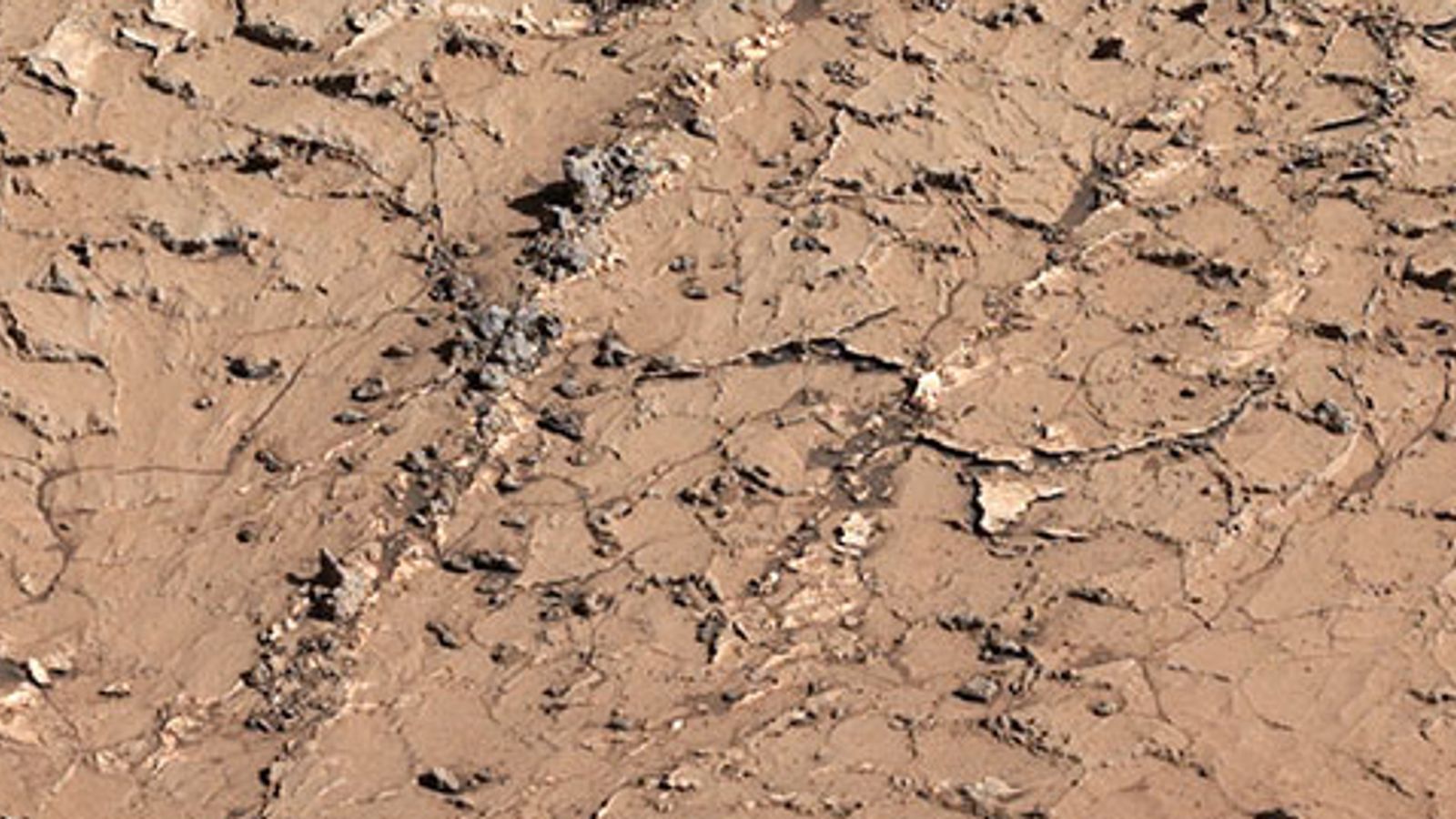NASA’s Curiosity Mars rover has made a surprising discovery that may have cracked how the red planet once supported life.
The car-sized robot, which touched down on the surface back in 2012, found an array of well-preserved ancient mud cracks suggestive of past wet and dry seasons.
It’s long been theorised that persistent Earth-like weather cycles could have helped microbial life thrive on Mars, and researchers believe the distinctive hexagonal patterns may be the proof.
William Rapin, lead author of a new paper in the Nature journal, said: “This is the first tangible evidence we have seen that the ancient climate of Mars had such regular, Earth-like wet-dry cycles.
“Wet-dry cycles are helpful – maybe even required – for the molecular evolution that could lead to life.”
Curiosity first spotted the mud cracks in 2021 after drilling a sample from a location nicknamed Pontours.
Read more:
Could this material change the world?
Mars is spinning faster for reasons unknown
It came across it during its ascent of the three-mile-high Mount Sharp in the Gale Crater.
Different minerals have been found across the area, with some parts rich in clay (which usually forms in water) and others with sulfates (which tend to form as water dries up).
The cracks were found in a transitional zone, offering a glimpse into a period when long dry spells became more prevalent and the crater’s old lakes and rivers began to recede.
Be the first to get Breaking News
Install the Sky News app for free
Mud fractures into T-shaped junctions as it dries out, but softens and turns Y-shaped when repeatedly exposed to water again, eventually forming a hexagonal pattern that has been preserved for billions of years.
These wet-dry cycles are vital to the formation of polymers – the molecules considered to be the chemical building blocks of life.
The cracks are by no means the first sign of Mars once supporting microbial life, but NASA said the paper’s findings were another sign of how much more evidence there could be for Curiosity to find.








